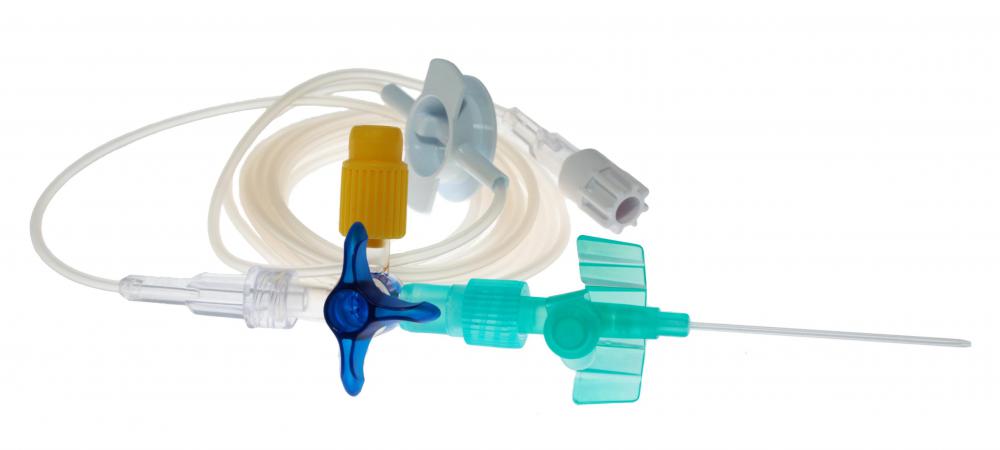At WiseGEEK, we're committed to delivering accurate, trustworthy information. Our expert-authored content is rigorously fact-checked and sourced from credible authorities. Discover how we uphold the highest standards in providing you with reliable knowledge.
What Are the Different Catheter Types?
There are several different catheter types that exist to accommodate different medical needs. These catheters include the urinary catheter, the surgical catheter, the ablation catheter, the pigtail catheter and the split catheter. The various catheter types are meant to drain different bodily fluids during different procedures.
A urinary catheter usually is a straight catheter that is inserted directly into the urethra. Intermittent catheters, not meant to drain urine over a long term period of time, do not stay in place on their own. Foley catheters are meant for long-term use and have a water-filled balloon at the tip to hold it in place. Alternately, a catheter might fit over a penis using a condom to minimize the risk of internal infection.

During surgery, blood, pus or other fluids might have to be drained from the site to provide the surgeon with clear access to the area of interest. Surgical catheters are flexible catheters that are inserted into surgical sites, sometimes through small incisions, in the case of laparoscopic surgery. These catheters are not intended for long-term use.

Ablation catheters are one of the main catheter types that help regulate the heart rate. These catheters are led to the heart through a major blood vessel, and they use high-frequency radio waves to destroy abnormally functioning heart tissue that beats improperly, which can cause heart arrhythmia. Occasionally, this variety of the catheter types is also used during open-heart surgery to control the patient's heart rate.

The pigtail catheter is meant to drain fluids from abscesses or ducts and is curled at the end. It contains several holes to absorb maximum amounts of fluid. The curled shape helps minimize pressure on the surrounding tissue and hold the catheter in place. This variation on catheter types can also be used to inject fluid into tissues or organs, and the shape and holes lower the fluid pressure as it exits into the body, minimizing the chance of damage to organs.

A split catheter is, like the ablation catheter, inserted into a major vein, normally in the neck. This type of catheter, however, removes blood for dialysis instead of emitting radio waves. The dual tubes in this type of catheter allow blood to be removed through one side to be cleansed of toxins, and clean blood can be returned to the vein through the other side. These catheters usually are used in patients who have experienced extensive kidney damage.
AS FEATURED ON:
AS FEATURED ON:
















Discussion Comments
@WittyBee- Yes, there are different sizes of catheters, and the patient is given the smallest circumference of catheter to allow for adequate urinary drainage. The male catheter is longer and may be a different circumference than the female type as well.
I don't know if the urethra stretches from use, but if someone has mucus or other debris in the urine, the doctor may prescribe a larger size. I could be wrong, but this may be the reason why your dad was given a larger catheter, not stretching.
Aren't there different sizes of urinary catheters? I know the ones for men are longer than those for women, but I think my dad started out with one size of catheter and had to move up to one larger in diameter. I think the urethra stretches after using catheters for many years.
Post your comments